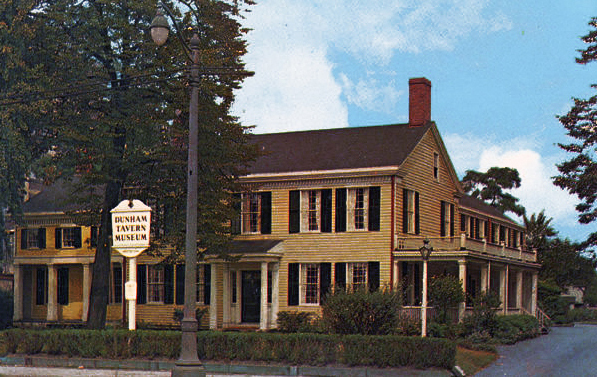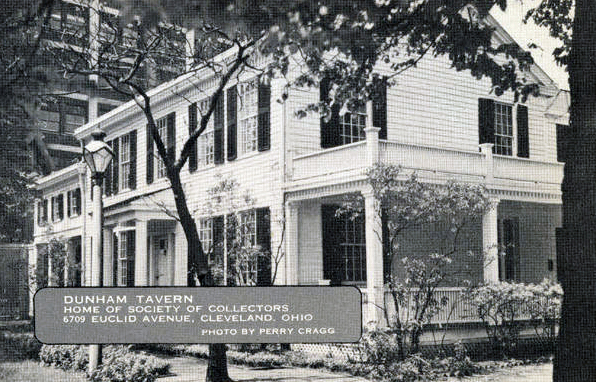Traveling around Cleveland, do you ever wonder what the numbered streets used to be named? Or do you ponder how some of our current streets earned their names?
In 1906, as newcomers poured into Cleveland and the city grew rapidly, the City Council adopted a numerical system for streets, changing many street names that had had decades of history and stories behind them. The council enumerated the north/south streets that emanated eastward and westward from Public Square.
Well, the Teaching Cleveland team did some research, and each month during this academic year, we’ll provide some information about Cleveland city streets that you may not have known. We’re here all year to give you some street cred!

Dunham St (Now E 66th St)
Nestled on the near east side of downtown Cleveland, Dunham Tavern stands as a cherished relic of the city’s past. Built in 1842 by Rufus and Jane Pratt Dunham, this historic structure began as a humble family home for those who had recently migrated to Cleveland in that era but quickly transformed into a vital waypoint for travelers and merchants navigating the rugged terrain of early Ohio.
Around the time the Dunhams built their homestead, Cleveland began to bustle after decades of slow growth. The canal era had brought far more people during those days, and Dunham Tavern thrived as a stagecoach stop along what was once known as the Buffalo-Cleveland-Detroit Road. Its strategic location at the crossroads of major routes facilitated trade and transportation, making it a center of activity in the burgeoning city.
As Cleveland grew, so too did Dunham Tavern’s significance. It served various functions over the years, from a hotel to a tavern, and even as a meeting place for local organizations. Whig party political meetings were often held in the tavern as well as turkey shoots and other leisure-time activities.
While most of the homes on Euclid Avenue were torn down after the Great Depression hit the city in the 1930s, Dunham Tavern remained. Preservation efforts for Dunham Tavern began in the mid-20th century.
The establishment of the Dunham Tavern Museum ensured that this historical gem would be safeguarded for future generations to appreciate. In 1973, Dunham Tavern received national recognition when it was listed on the prestigious National Register of Historic Places, cementing its status as an important landmark in Cleveland’s history. Today, it stands as a testament to the pioneers who helped shape the city’s identity and a reminder of the resilience and ingenuity that define Cleveland’s spirit.

The Dunham Tavern today sits in the Midtown neighborhood of Cleveland, right next door to the newly constructed home of the Cleveland Foundation. Visitors to the East 66th and Euclid area and to the tavern can step back in time and experience the rich tapestry of Cleveland’s past through educational programs and events hosted at the museum. You can learn more about Dunham Tavern here and here.
Dunham Street, now East 66th Street, runs north-south mostly from Superior to Carnegie. It bisects Euclid Avenue to run along the west side of the former Dunham Tavern property. Interestingly, East 66th is also home to another historic landmark in Cleveland – League Park, once the home of professional baseball and football in Cleveland from 1890 to the 1940s – at Lexington Avenue in the Hough neighborhood. Today, League Park’s field has been restored, and the home plate is exactly at the same spot where Babe Ruth hit his 500th home run in 1929, at the time the first ever baseball player to hit that mark. Visitors can also visit the Baseball Heritage Museum, now in the building that once served as the stadium’s ticket office.
